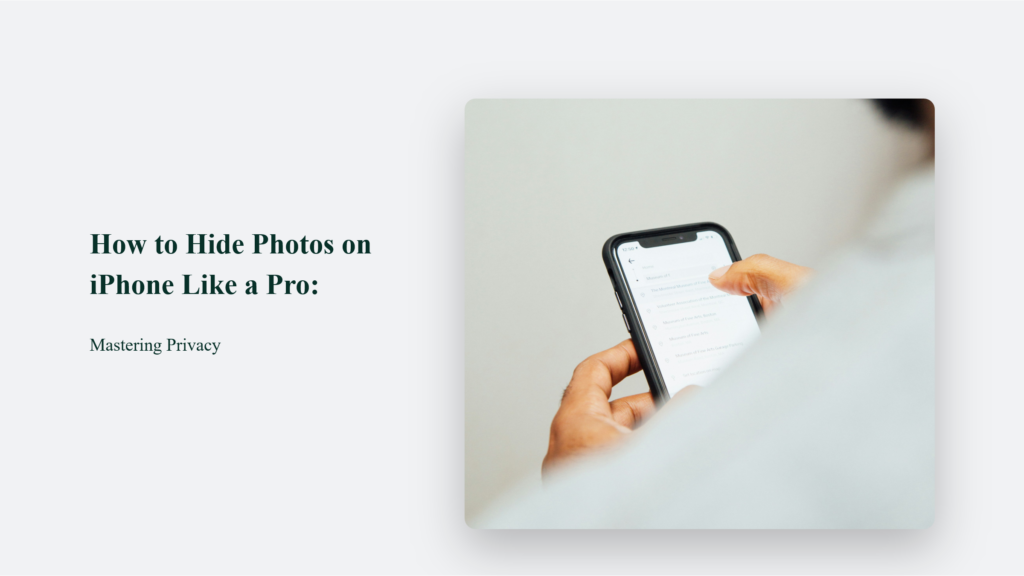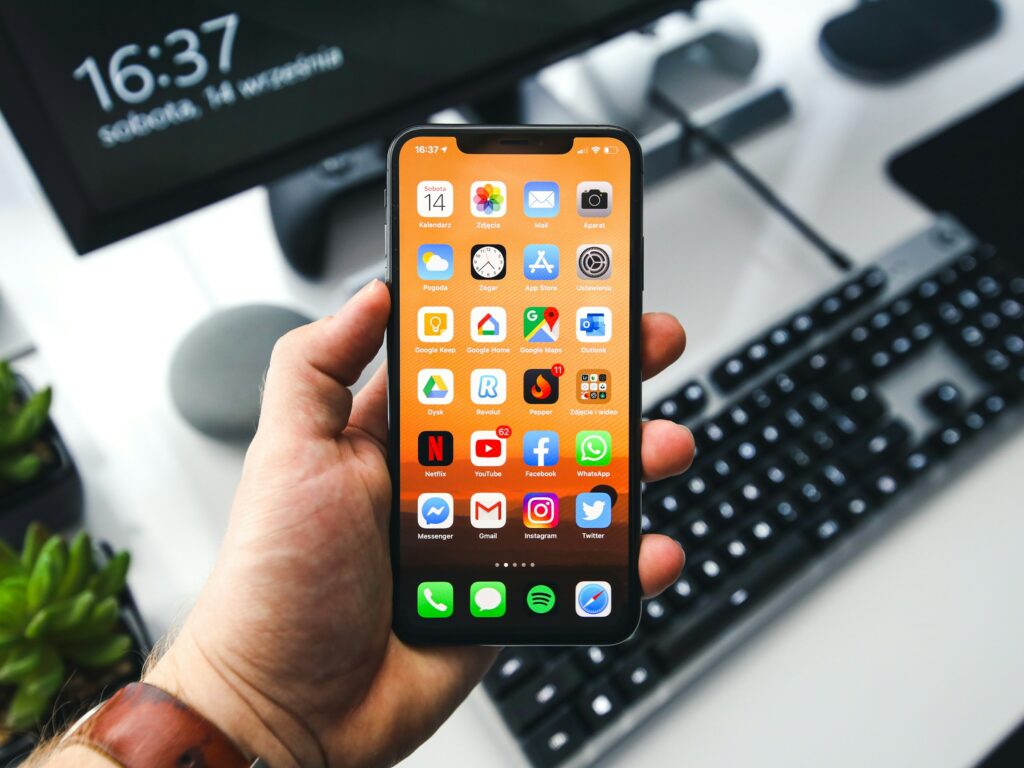Privacy becomes paramount in the digital age, where our smartphones become extensions of our memories. Photos often hold the most personal value among the many treasures stored within our iPhones. Whether it’s a snapshot of a secret project or a candid moment meant for a few eyes, the ability to hide these photos is a feature many of us treasure. So, how hide photos on iPhone Like a Pro?

Introduction to Hiding Photos on Your iPhone
Let’s face it, we’ve all been there – scrolling through our photo library, only to hastily skip past certain photos when someone peeks over our shoulder. It’s not just about embarrassing snapshots; it’s about maintaining a boundary between our public and private lives. Thankfully, Apple has woven into the fabric of iOS the ability to hide photos, but the question remains: Are you making the most out of this feature?
How to Hide Photos on iPhone:
Many of us relish the ability to conceal our photos on our iPhones in the quest for privacy. Among the myriad tools at our disposal, the Hidden Album stands out as a sanctuary for those snapshots we prefer to keep under wraps. But how do we navigate this feature to ensure our personal moments remain personal?
The Hidden Album: Your Digital Safe
Imagine a vault within your iPhone, a digital safe where your private photos can reside away from the general gaze of your camera roll. It is the essence of the Hidden Album in iOS. To hide a photo, the process is disarmingly simple:
- Select the Photo: Browse your gallery to find the photo (or photos) you wish to hide.
- Share, then Hide: Tap on the share button—a square with an arrow pointing up—and among the myriad options, you’ll find “Hide.” Select it, and confirm your choice.
Like that, the photo vanishes from your main gallery and is squirrelled into the Hidden Album. It’s a neat trick, but it’s worth noting that this is less about encrypting your photos and more about tucking them out of immediate view. A curious soul accessing your iPhone could still stumble upon your Hidden Album, leading us to the next step: making it less conspicuous.
Securing the Hidden Album
Introduced with iOS 14, Apple allowed users to add a cloak of invisibility to the Hidden Album. It’s a feature that sounds like something out of a spy novel—hiding the hidden. Here’s how you can engage this additional layer of privacy:
- Open Settings: The journey begins in the Settings app, the control panel for your iPhone’s numerous capabilities.
- Navigate to Photos: Scroll until you find “Photos.” This is where you tweak settings related to your camera roll and album structures.
- Toggle Off the Hidden Album: Within the Photos settings, you’ll find an option labelled “Hidden Album.” It’s turned on by default, making the Hidden Album visible within your Albums tab. Toggle this option off, and the Hidden Album will vanish from view in the Photos app.
What’s particularly intriguing about this feature is its duality. On one hand, it’s a straightforward method to keep prying eyes away from your personal moments. On the other, it’s a testament to the evolving understanding of privacy in the digital realm. By allowing users to hide their hidden content, Apple acknowledges the nuanced needs of its user base, offering a simple yet effective tool for managing personal and sensitive information.
The Paradox of Hiding the Hidden
There’s a delightful paradox at the heart of hiding the Hidden Album. It’s akin to locking a door and then hiding the key in plain sight, except in this case, the door becomes invisible, too. This double layer of privacy reflects our growing desire for digital security and personal space. In an era where our smartphones are extensions of our lives, such features become not just conveniences but necessities.
However, it’s crucial to remember that the Hidden Album, even when made invisible, is not encrypted or protected by a password.
Those with access to your device could, with enough determination, find their way to it if they delve into the Settings. Thus, while this feature offers a layer of privacy, it’s part of a broader strategy that should include strong passwords, biometric locks, and perhaps even third-party encryption apps for those seeking ironclad security for their digital memories.
In the end:
In the tapestry of our digital lives, our photos are vibrant threads woven with memories, emotions, and secrets. Learning how to skillfully hide photos on your iPhone protects these threads and ensures that our digital quilt remains as private or public as we wish it to be. Embrace these features, and take control of your privacy today.
Frequently Asked Questions:
Can hidden photos be seen by others?
While hidden from your main library, anyone with access to your phone can still find them if they know where to look.
Is there a way to password-protect the Hidden Album?
Currently, iOS does not offer password protection for the Hidden Album. For heightened security, consider third-party apps.




